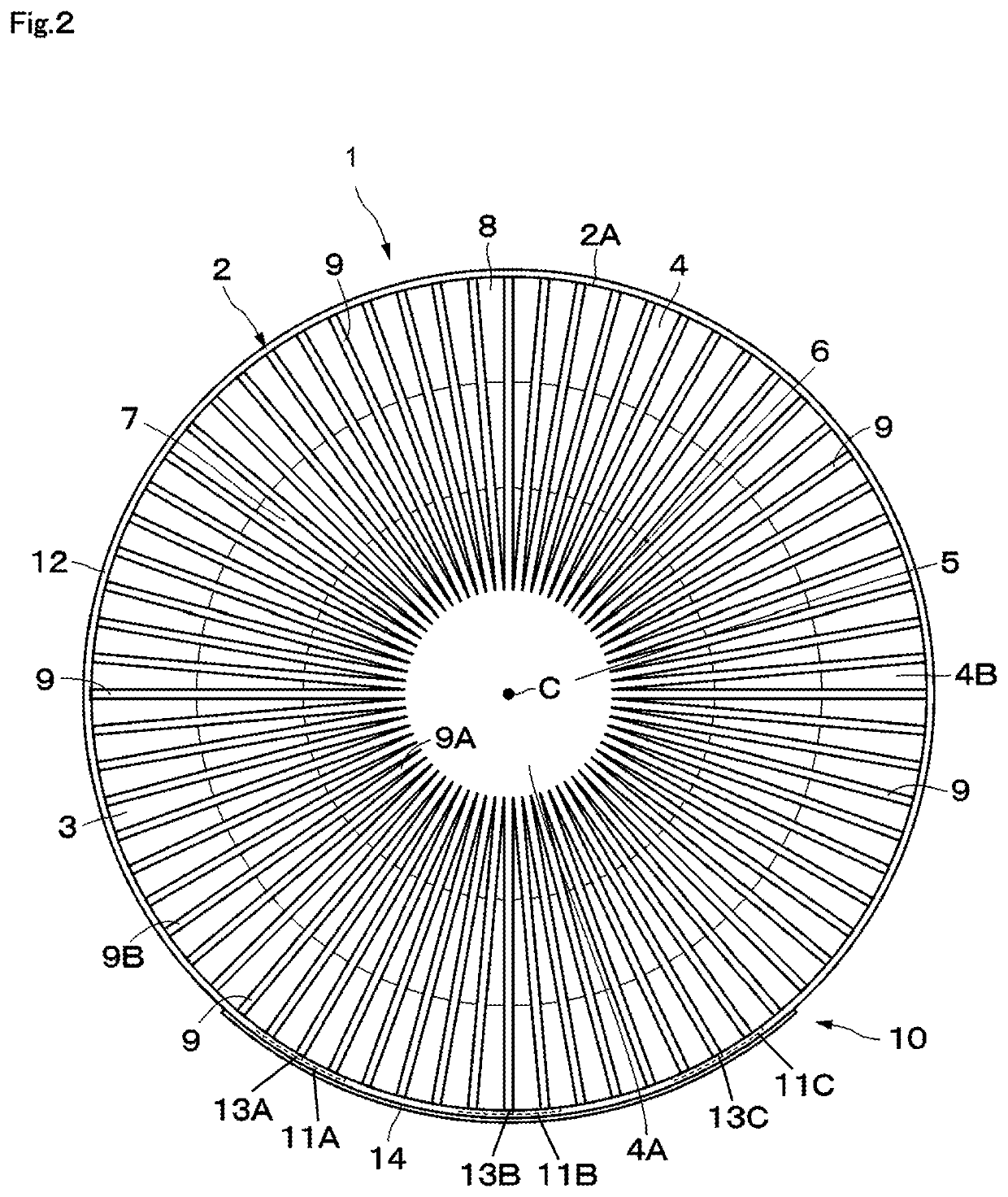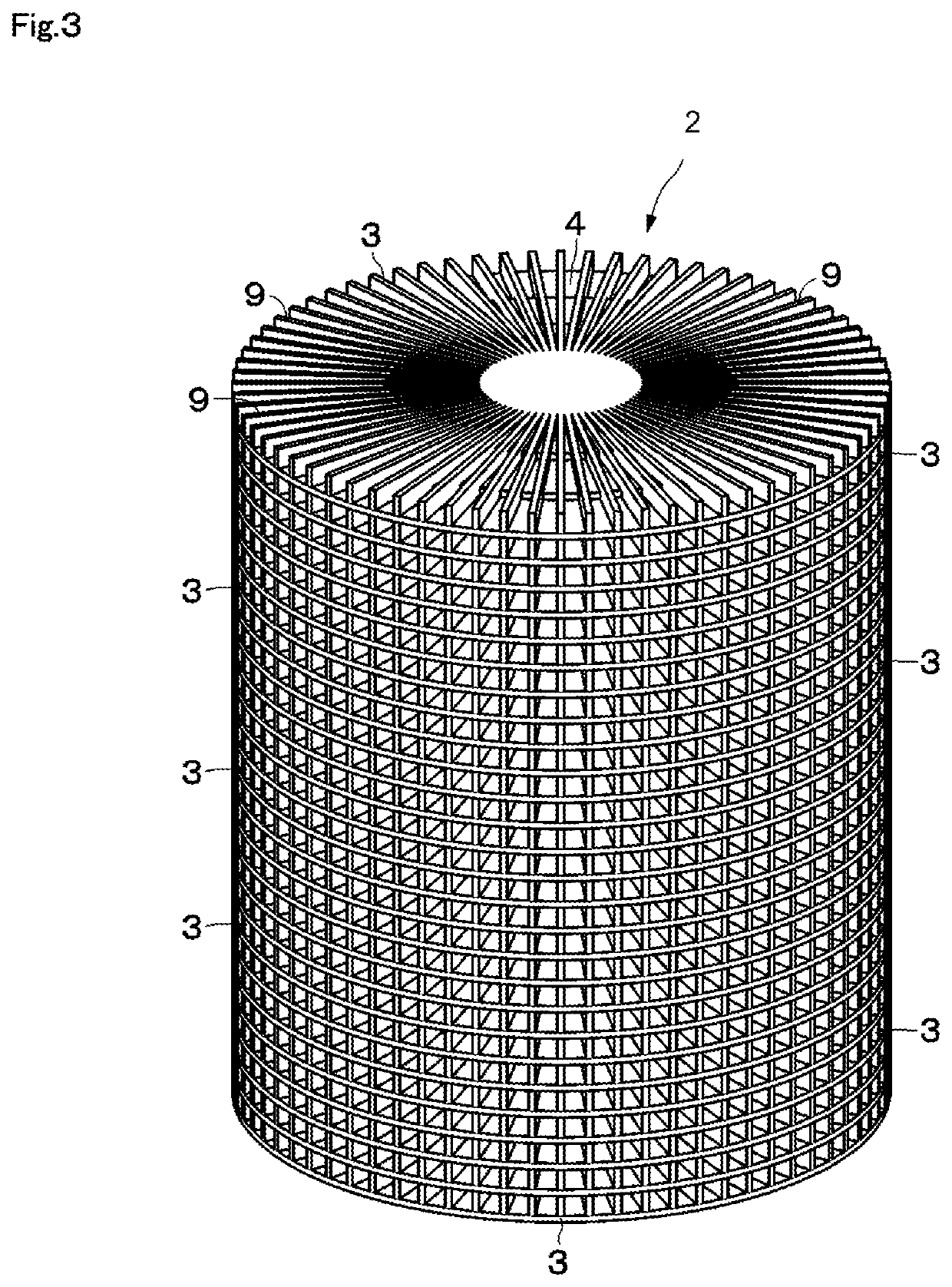Dielectric lens
- Summary
- Abstract
- Description
- Claims
- Application Information
AI Technical Summary
Benefits of technology
Problems solved by technology
Method used
Image
Examples
first embodiment
[0027]FIGS. 1 to 10 illustrate a Luneburg lens antenna device 1 (hereinafter referred to as antenna device 1) according to a The antenna device 1 includes a dielectric lens 2 and an array antenna 10.
[0028]The dielectric lens 2 forms a cylindrical shape having distribution of permittivity varying with respect to the radial direction. As illustrated in FIGS. 3 to 7, the dielectric lens 2 is a laminate of a plurality of disc members 3 having the distribution of permittivity varying with respect to the radial direction. The disc members 3 are integrally formed from a resin material that allows injection molding and that has relative permittivity near two (e.g., polypropylene). The plurality of disc members 3 have the same outer diameter dimension and form a cylindrical laminate.
[0029]As illustrated in FIG. 7, each of the disc members 3 includes a planar section 4 and fin sections 9. In the planar section 4, a thickness dimension Tp4 of a radially outer area 4B is smaller than a thickne...
second embodiment
[0059]As in a second variation illustrated in FIG. 16, a disc member 41 may have a through hole 42 at the center of the planar section 4. In this case, in the state where a plurality of disc members 41 are laminated, a core member 43 made of the same dielectric material as that of the planar section 4 is placed in the through holes 42. In this case, the centers of the plurality of disc members 41 can be easily aligned by the use of the core member 43. This configuration is also applicable to the
[0060]Moreover, in the above-described first embodiment, the dielectric lens 2 has a cylindrical shape formed by the laminate of the disc members 3 having the same outer diameter dimension. The present disclosure is not limited to this example. As in a third variation illustrated in FIG. 17, for example, a plurality of disc members 52 similar to the disc members 3 may be formed with different outer diameter dimensions. The laminate of the plurality of disc members 52 with different outer diam...
PUM
 Login to View More
Login to View More Abstract
Description
Claims
Application Information
 Login to View More
Login to View More - R&D
- Intellectual Property
- Life Sciences
- Materials
- Tech Scout
- Unparalleled Data Quality
- Higher Quality Content
- 60% Fewer Hallucinations
Browse by: Latest US Patents, China's latest patents, Technical Efficacy Thesaurus, Application Domain, Technology Topic, Popular Technical Reports.
© 2025 PatSnap. All rights reserved.Legal|Privacy policy|Modern Slavery Act Transparency Statement|Sitemap|About US| Contact US: help@patsnap.com



